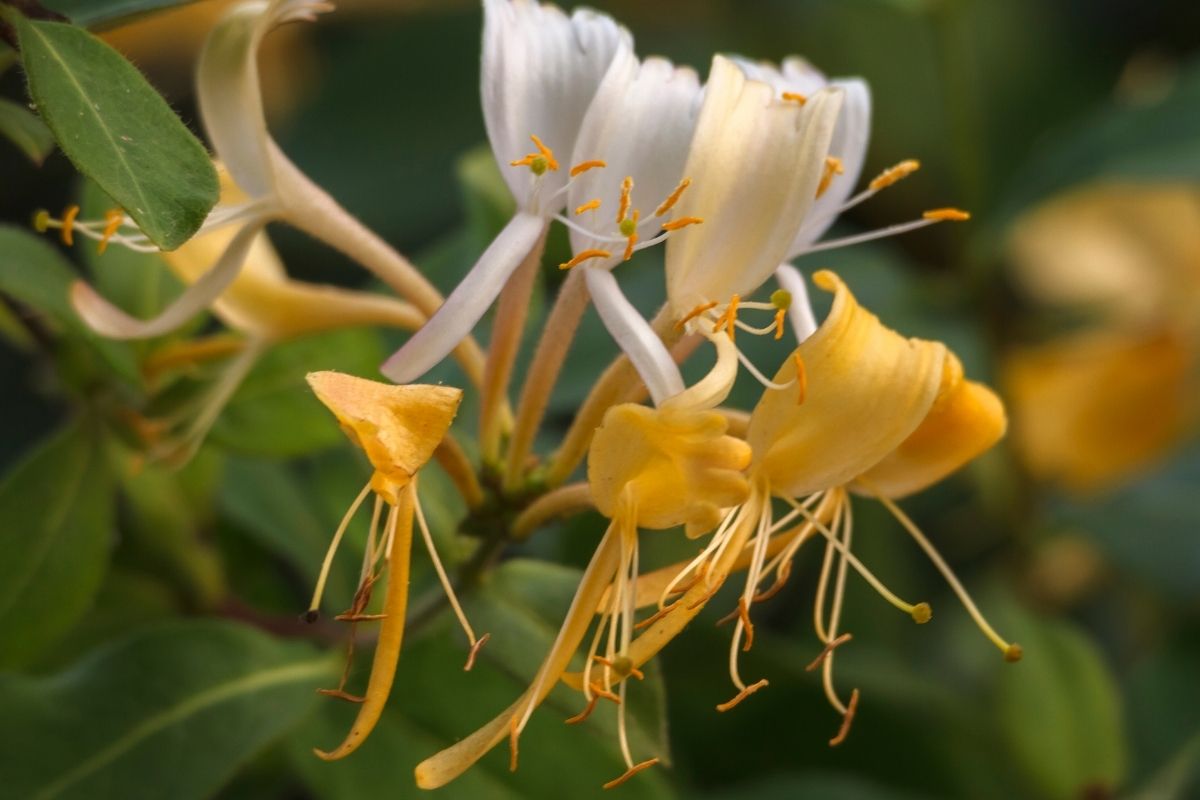
Every gardener wants to know one thing before they plant something that climbs like a decorative vine. Whether you want it to grow fast for quick coverage of some structure or to hide an unsightly part of the yard, eventually it will require maintenance.
That’s why before you plant any vine type of plant, it’s best to know what sort of green thumb maintenance you can expect to need to carry out and how often it will need to be done.
If you are thinking about establishing some English ivy in your garden, then there are a few things to consider before you let it take root.
Let’s find out about the characteristics of ivy and how vigorously it grows annually, so you know what you should expect in terms of maintaining it.
What Is English Ivy?
English ivy is an evergreen climbing vine. It is available in several colors as a decorative plant. Its botanical name is Hedera helix, and it is commonly used in landscaping to cover areas of ground or to cover structures vertically.
Ivy is known for its invasive qualities, as it is an aggressive climber which can be hard to get rid of when it is no longer wanted.
Because of its spiky, hairy finger-like aerial roots, it can attach to most surfaces easily, and will leave its mark if you try to remove it from wood or brickwork as these roots act like they emit superglue from them, especially if they’ve been there for a long time.
In England, ivy is used as a decorative cover-up plant for screens, walls, or ground areas, but it is also seen as a parasitic weed that can cause damage to property and other plants if left unchecked.
The vines of English ivy are fast growers and can reach up to a hundred feet long if left to their own devices.
What Types Of English Ivy Are There?

English ivy usually refers to the wild, invasive type of ivy that many states discourage you to grow. English ivy has dark green leaves with a waxy appearance and the plants are toxic to both humans and animals.
They can also cause considerable damage to woodwork, bricks, and trees if left to run riot.
Although the term “English ivy” typically refers to this aggressive and invasive species of ivy, there are many types of decorative ivy that can be kept under control more easily.
Some miniature types of Ivy are suitable for use in pots, tubs, and hanging baskets as their leaf-covered tendrils are pleasant-looking when they drape over the edge of the container.
While the wild form of English ivy is widely considered to be a pest, they have been bred into charming decorative varieties with different color combinations, leaf shapes, and characteristics to the original mother plant.
Caring For Ivy Plants
If you want to try growing decorative ivy or even English ivy for some reason known only to yourself, it’s best to contain it to a pot of some sort, so it doesn’t get too big and spread.
You can have ivy as an indoor potted plant, but they don’t tend to like direct sunlight much, so make sure it’s not being roasted by the sun if you can help it.
Outdoors, ivy will thrive almost anywhere. Its tenacity and determination to thrive in almost any climate is what marks it out as such a pest in its original form.
How Fast Does English Ivy Grow?
While ivy is evergreen, yellow, or white, depending on which cultivated variety you are growing, it only grows fast in the spring and summer seasons.
Year-old or older growth will have a stem that appears woody, and the older the vine is, the more root fibers you will see on the surface. The longer a vine has been attached to something, the more it clings on to support the new growth further along.
New growth has a stem that is usually light green and pliable with much fewer root hairs present. New growth leaves will appear more glossy than waxy in appearance and may be lighter in color.
Telling the difference between old and new growth can help you to trim back your ivy plants if you have planted them in the ground and are using it as a covering plant.
If you are, you’ll need to trim back the new growth at least once in the spring and once in the fall, but you might well find that you are needing to clip back the fast-growing tendrils every three weeks or so during the late spring and early summer.
As a rule, if your indoor ivy plant is kept in an optimum position in the house and has access to everything they need to thrive, you can expect a growth of around nine feet a year.
This will be across all the limbs of the vine, so if your plant has nine tendrils, they might each grow a foot in length over the course of a year.
This is the rule for when the plant is established, so for the first year or so, you might not see this much growth.
If you have a miniature variety of ivy indoors then you might not see this amount of growth.
However, the good thing about having ivy as a houseplant, is that it might not stop growing in the winter as it would outdoors, so having ivy indoors can encourage growth.
Do not take this to mean that aggressive varieties grown outdoors could be described as slow-growing though.
Whether you planted it or not, an English ivy plant can creep up on a fence, tree trunk, or wall so fast that by the time you notice it, you’ll struggle to get rid of it.
Things To Consider Before Planting English Ivy In Your Garden
While we agree in principle that some variegated forms of decorative ivy are pretty to look at and that as houseplants they are great air purifiers, there are some things to think about before you plant ivy outside and especially uncontained in the ground.
Is Ivy Allowed In Your Area?
English ivy is considered to be an invasive species of plant in several parts of the USA. It is certainly worth checking with your local authority whether this is a plant they strongly discourage growing uncontained in your area.
Is It Near Anything It Can Damage?
If you’re planting an ivy vine near a fence, or trellis to create a cover for it, you should be aware that ivy will likely cover the structure within a couple of years and after that, it will start to slowly crush it as the new growth turns to older, woody, strong trunks.
Keeping it well-trimmed can both encourage even more new growth while discouraging the old growth from getting thicker and stronger than it already is.
This is because the majority of energy will be going into the repeated new growth rather than the thickening of the old trunks, but you’ll have to keep cutting it back.
Is It Near Your House, Or Any Buildings?
Planting ivy as a cover for blocks, siding, or bricks can be a serious and costly mistake. Ivy is essentially a parasitic plant that sucks the moisture from walls and reduces the natural life of any structure it attaches to.
For this reason, we do not recommend letting it or encouraging it to grow against a building.
Can You Maintain It?
Growing ivy outdoors takes zero effort from a gardener for it to thrive and spread, but if you don’t want it to take over your whole yard, and your neighbors too, then you’ll need to be prepared to trim it back harshly several times a year.
Some ivy vines can climb dozens of feet upwards if they have something to climb, so if it gets out of hand, you’ll likely need a ladder to chop it back again.
Final Thoughts
Ivy is known as an invasive plant and energetic grower for a good reason. It is the bane of many gardeners’ lives because no sooner have you noticed it has appeared that it has taken over.
It is worth noting that once an aged ivy vine has attached itself to something such as wood, walls, or brickwork it is extremely difficult to get that surface back to how it originally looked before the ivy embraced it even if you remove the vine.
When ivy is stripped back, it leaves dozens of its tiny hairy roots behind and firmly attached. Some time spent with a stiff wire brush could help lift them off, but you won’t be able to get them all off, so it looks how it used to.
Because of these reasons, we advise you to keep ivy where it belongs, as a potted plant indoors or on the patio, where it can’t take root and spread.
If you take care to contain and maintain ivy and keep it as a small plant, there is no reason why you cannot enjoy the multi-colors of their leaves and their purifying properties without incident.
Just keep an eye on it, and be prepared that it will take more maintenance to keep it contained than it will to help it grow.
- Best Hanging Plant For Low Light - September 4, 2023
- Best Indoor Plants Florida - August 28, 2023
- Best Plants For Bathroom Smells - August 21, 2023








